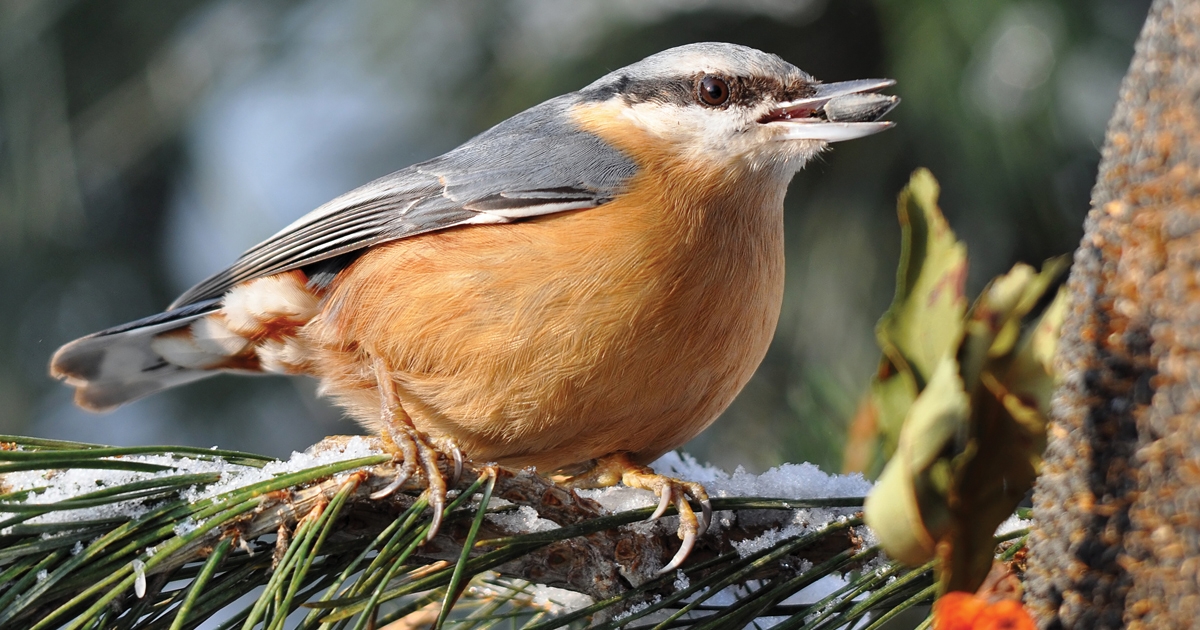By MARY ANN REUTER
As winter settles like a white blanket in the western woodlands, the stage is set for the energetic performances of two of the season’s favorite winged singers and dancers. Inquisitive and acrobatic chickadees and nuthatches, with their hoarse chick-a-zee-zee-zee and nasal yank-yank-yank calls, bring sleeping forest — and backyard bird feeders — to life.
The daring, agile nuthatch creeps headfirst down a tree trunk, then stops and looks around with its head held at a 90-degree angle. It may pause to hang-and-hammer at a crevice with its strong, woodpecker-like bill.
The chickadee is also a fearless, constantly active, insect-and-seed-eater of the mountain forest, sometimes hanging upside down on a conifer branch to peck out a meal.
Chickadees, nuthatches, and titmice often flock together and are easily attracted during the winter months to feeding stations with treats of suet and sunflower seeds. Their manic activity and friendly nature chase away the gray winter humdrums as the season melts into spring.
Idaho and Montana are lucky to have four species of chickadees and three of nuthatches. The black-capped chickadees and mountain chickadees are the most common, but the boreal chickadee and chestnut-backed chickadee are also found in the northern coniferous forests.
Only in the mountains of the Northwest do more than two species of the black-bibbed, dark-capped acrobats occur together.
Except for the snowy white throat, the white-breasted nuthatch resembles the chickadee in plumage, though not in shape or actions. The best known of the nuthatches, it is recognized by its black cap and beady black eyes on a white face.
The smaller red-breasted nuthatch sports a broad, black line through the eye, and its call is a higher and more nasal sound, resembling a tiny tin horn. The pygmy nuthatch is partial to pines, especially yellow pine.
The plain titmouse of the West is an associate of the other birds and is distinguished from chickadees by its white throat, crest, and larger size. Unlike other titmice, it has a chick-a-dee-dee call that sounds much more like the call of a chickadee than of a titmouse. Like its winter companions, the nuthatch and chickadee, you usually hear them before you see them.
So, if you are feeling a touch of the winter blues, hang a well-stocked bird feeder out the window for a bit of theater. Then watch this merry trio of musical and acrobatic performers sing and dance your spirits into a joyous — and long-awaited — spring. MSN








